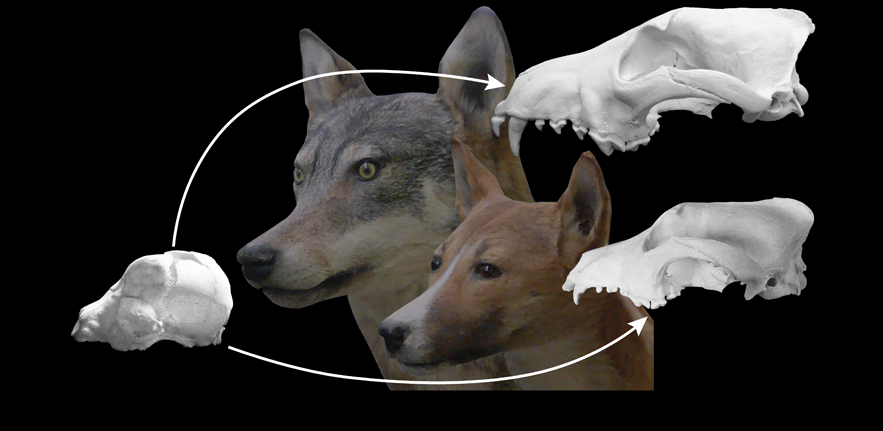Submitted by Administrator on Wed, 18/10/2017 - 11:10
New evidence shows that domestication of dogs has changed their skull shapes
For several decades there has been considerable debate as to whether domestic mammals are paedomorphic (juvenilised) forms of their wild ancestors. The most iconic of all domesticated animals, the dog, has been at the centre of this controversy, with reports of selection for a juvenile appearance resulting in a paedomorphic skull shape. A recent study rejected this hypothesis, claiming dogs are ‘neomorphic’, i.e. having a whole new skull shape.
Dr Madeleine Geiger, a visiting postdoctoral researcher in the department, along with other colleagues contends that the paedomorphosis hypothesis in domestic dogs has not yet been tested with proper methods and data, for example comparing the ontogenetic series of both the wild ancestor and the domesticated form. This new study does precisely this.
The group sampled a unique data set, including dog, wolf and archeological dog data, crucial for comparing patterns of growth, and applied state-of-the-art geometric morphometric methods. They show that patterns of juvenile-to-adult change are largely similar in wolves and domestic dogs, but differ in two ways. First, dog skulls show unique (neomorphic) features already shortly after birth, and these features persist throughout life. Second, at any given age, juvenile dogs exhibit skull shapes that resemble those of consistently younger wolves, even in dog breeds that do not exhibit a ‘juvenilized’ skull shape as adults.
These patterns exemplify the complex nature of evolutionary changes during dog domestication: the skull shape of adult dogs cannot simply be explained as either neomorphic or paedomorphic.

